St Mary's Dominican Convent
Maitland
Bishop & Son 1883, 2m., 10 sp. st., mechanical
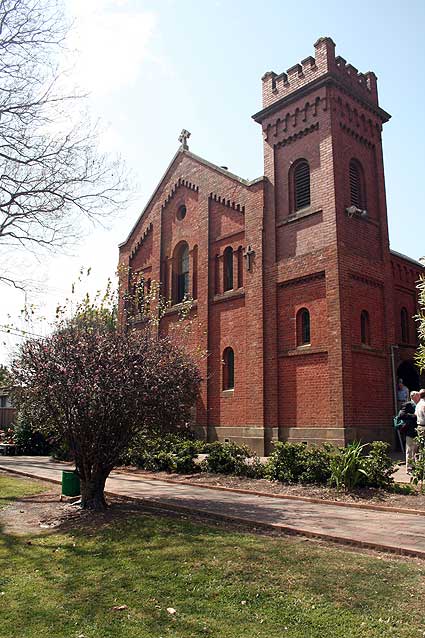
Historical and Technical Documentation by Pastór de Lasala
© OHTA 2005 (last updated October 2005)
The former Dominican convent chapel, now part of a St Mary’s High School and also a base of an active Polish community, houses an exceptional instrument by Bishop & Son of 1883. Examples of this organbuilder’s work in New South Wales are limited to this solitary instrument. In Rushworth’s Historic Organs, we are told that Bishop exported a two manual instrument to St Benedict’s Catholic Church, Broadway, and a very small single manual instrument to St Patrick’s Catholic Church, Parramatta.
[2]
Neither instrument survives today, nor are their whereabouts known. If New South Wales has a scarcity of Bishop organs, Tasmania has a wealth of them, mainly remarkable single manual instruments in original and restored condition. (A number of these were visited during the 2002 Conference; their details, complete with photos can be seen on the OHTA website).
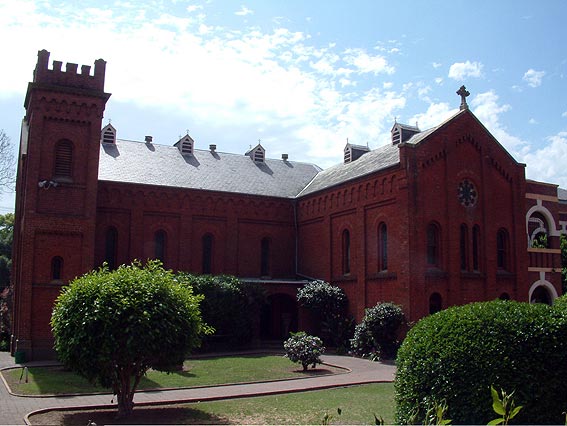
© PdL 2005
A rather curious feature of the gallery is the presence of a wire mesh starting at waist level. Its purpose may have been to prevent visitors to the loft from falling over the rail or, perhaps in more fancifully, a screen to conceal the identity of the girls singing in the choir!
The case pipes, comprising three flats of Open Diapason pipes in a 7-9-7 formation, have been gold sprayed. Nevertheless, the outline of some floral diapering patterns can be discerned around some of the pipe mouths. Each flat is separated by a vertical pillar, with a transom rail extending across the entire front. The impost features a crenellated upper section.
The console has a keycover which folds to create the back of a music desk. All the natural keys have tropic pinning designed to prevent the ivory from lifting in extremely warm temperatures: there are four pins in a square formation on the key head and a further two pins on the key back, one in front of the other. The original brass nameplate “Bishop & Son / 250 Marylebone Road / London N.W.” is affixed above the swell manual and to the centre.
[3]
The key cheeks are rounded and the stop head are of turned rosewood with gothic lettering, these latter two features identical to stop heads found on Forster & Andrews organs. The presence of a Clarabella stop and composition pedals is significant in that Bishop was the inventor of these.
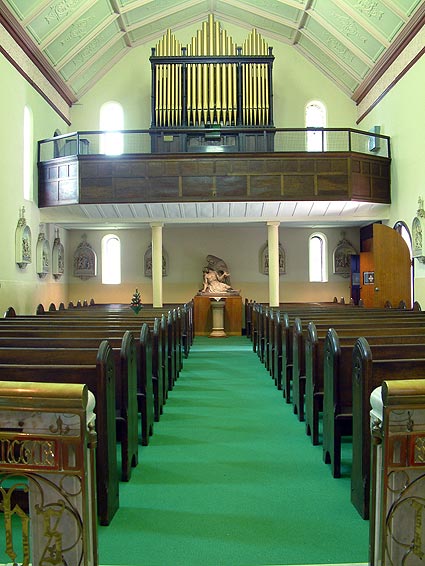
© PdL 2005
It is to the credit of Peter Jewkes and his team that this rare instrument - the sole surviving Bishop organ in New South Wales – has been kept in working order. Hopefully one day, the custodians of this organ might consent to have it sympathetically restored.
The organ retains most original features, although hand-blowing has been removed, the bellows cut down from double to single rise, tuning slides fitted to open metal pipes and the stenciled façade pipes have been painted over.
[4]

Bishop & Son 1883 (2/10 mechanical)
| Great Open Diapason Clarabella Dulciana Principal Fifteenth Swell Open Diapason Lieblich Gedackt Harmonic Flute Oboe Pedal Bourdon |
8 ft 8 ft 8 ft 4 ft 2 ft 8 ft 8 ft 4 ft 8 ft 16 ft |
Couplers
Swell to Great
Great to Pedals
Swell to Pedals
Mechanical action
Compass 56/30
Straight, flat pedalboard
Two composition pedals to the Great
Hitch-down swell pedal
No of pipes = 498
Pitch a1 = 440 Hz at 180 C
Wind pressure = 73mm (2 ⅞”)
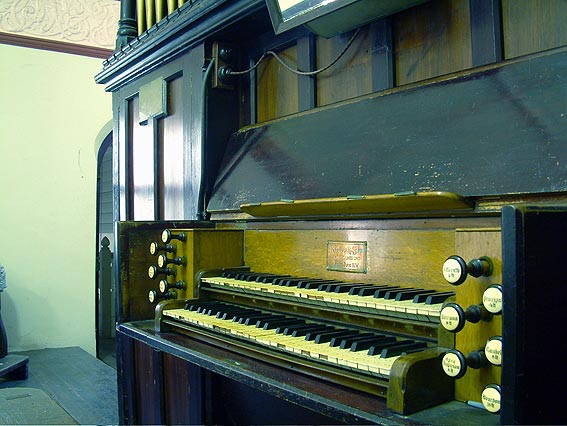
© PdL 2005
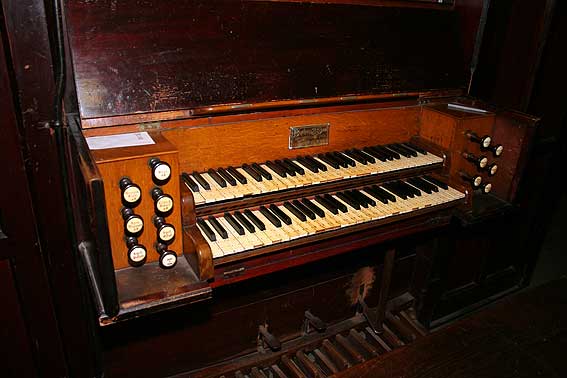
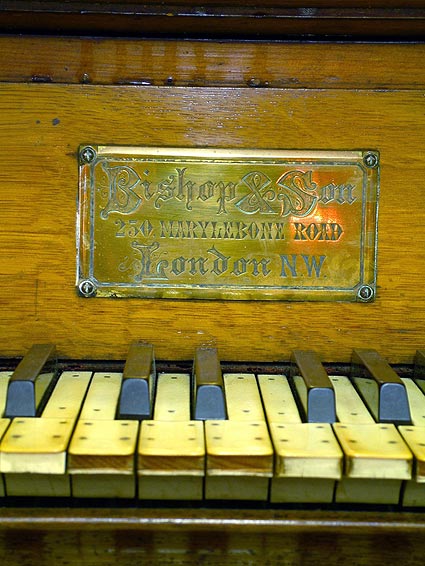
© PdL 2005
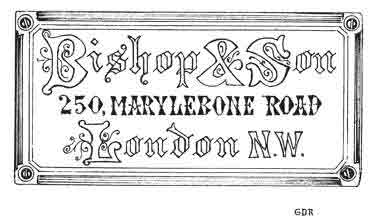
Builder’s plate, St Mary’s Dominican Convent, Maitland
(drawing by Graeme Rushworth)

Bishop & Son, London, 1883
St Mary’s Dominican Convent, Maitland
(drawing by Graeme Rushworth)
[1] Barry Maitland. The Pender index: a guide to the architectural work of the Pender practice of Maitland, N.S.W. Newcastle, NSW: Faculty of Architecture, Building and Design, University of Newcastle, 1999, 17, 39.
[2] Rushworth, Historic Organs of New South Wales Hale & Iremonger, 1988, 222-223.
[3] Noted by Pastor de Lasala, January 2004
[4]
John Stiller, “St Mary’s Dominican Convent Maitland NSW – Detailed Documentation of Pipe Organ built by Bishop & Son 1885”. Organ Historical Trust of Australia, 29 May 1981 and 6 June 1983.